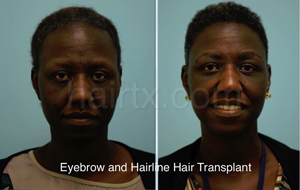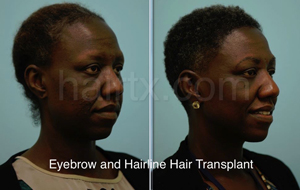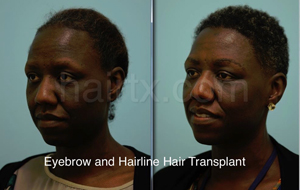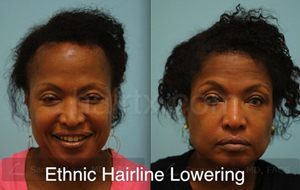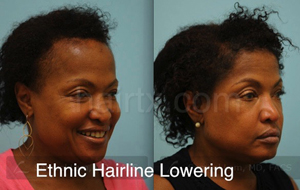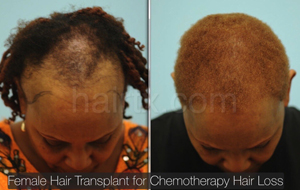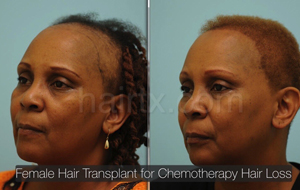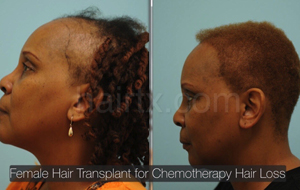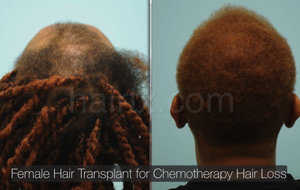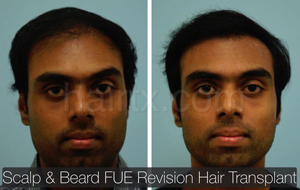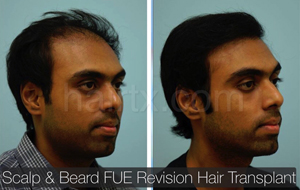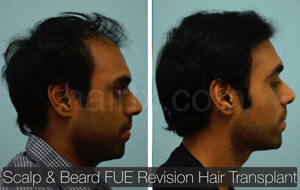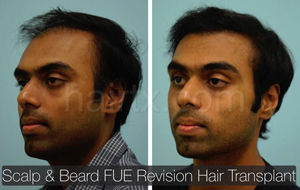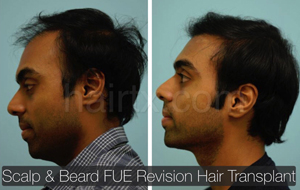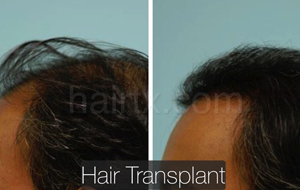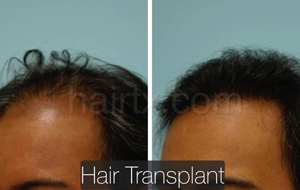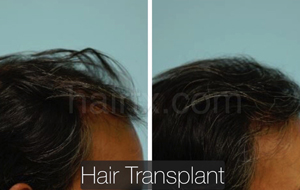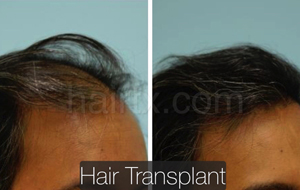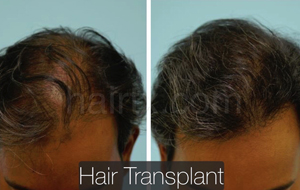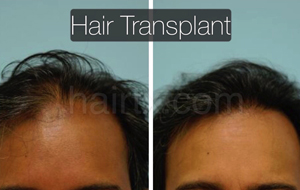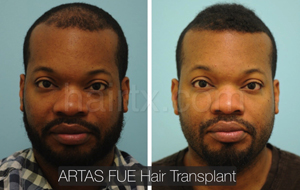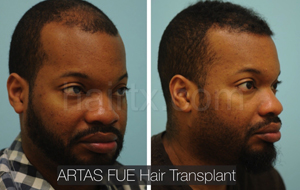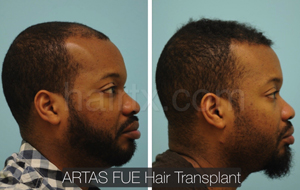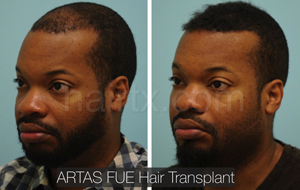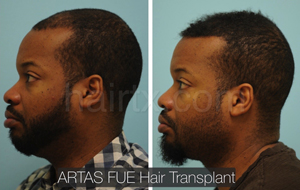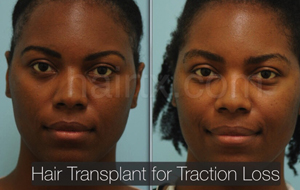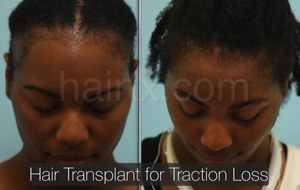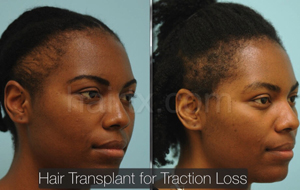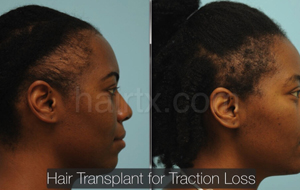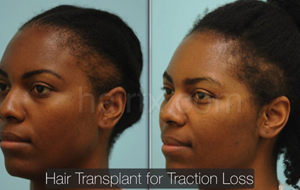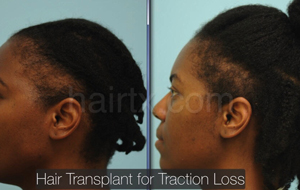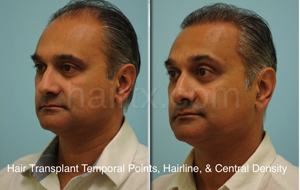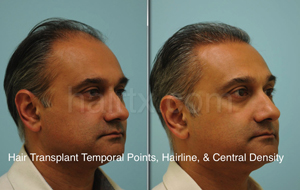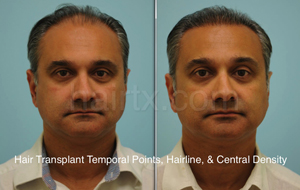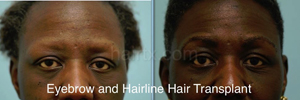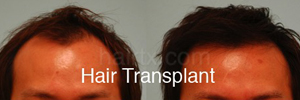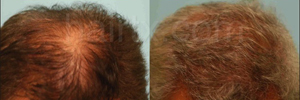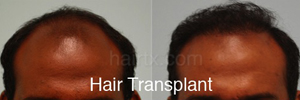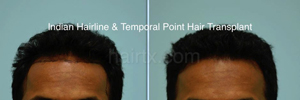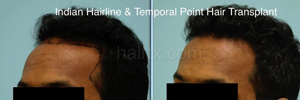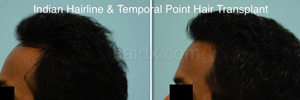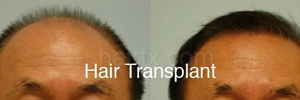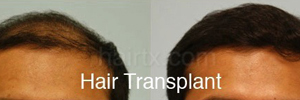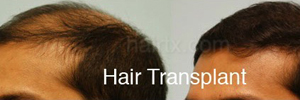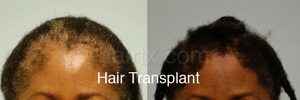Ethnic Hair Restoration
Hair restoration should be specific to one’s gender, ethnicity, facial shape, degree of hair loss, age, and aesthetic desires. Ethnicity is one of the important criteria to use to design a hairline and a strategic plan. For example, African-American or Hispanic men tend to have a straighter and squared-off hairline if they have enough donor hair to accomplish this objective. By contrast, Asian men have a much rounder hairline because of their wider head shape. African-American women can suffer from traction alopecia loss from braiding their hair, and their hair restoration requires a different approach than for Asian or Caucasian women. Furthermore, ethnic hair looks different under the microscope, thereby requiring a specific way of handling grafts during each procedure. These are only some of the many considerations that are important when working with the ethnic patient, which explains the importance of working with a surgeon who has the awareness and experience for every ethnic-specific hair-restoration procedure.
Dallas hair transplant surgeon Dr. Sam Lam specializes in performing hair restoration in all kinds of ethnicities and races including Asian, African (Black), Indo-Pakistani, Hispanic, Middle Eastern, etc. He designs hairlines that fit a face, gender, and ethnicity along with other considerations including donor supply, age, etc. Performing hair surgery in both genders in almost all ethnicities, Dr. Lam has an appreciation for ways to make sure that your hair transplant result naturally fits all of the above criteria to achieve the desired aesthetic outcome that is tailored to you.
Contact Us Today! Read Our Manifesto Visit Our Gallery
Key Points
- Ideal candidate
- Men and women seeking to restore their hair and have available donor hair.
- Men and women who believe that it is important to restore hair in accordance with characteristics of their ethnicity.
- What to do
- Schedule your procedure and plan on one week for recovery during which you are functional but may not be socially presentable for several days.
- If you color your hair regularly, you are recommended to color it 2 to 3 days before your procedure. You will be allowed to recolor it 2 weeks after the procedure.
- If you are from out of town, you will be required to arrive the day before the procedure and will be allowed to travel the day after, staying in town for a total of two nights. However, if you are not in town for two weeks after the procedure, you will need a professional to remove your sutures (stitches) if Dr. Lam performed a FUT procedure. Dr. Lam has many colleagues across the United States and the world who may be able to help remove your sutures so that you do not need to stay in Dallas for two weeks or return in two weeks to have your sutures removed.
- What to expect
- You can wear a hat immediately after the procedure, and you can wash your hair 24 hours after and travel the next day.
- Transplanted hair should start growing as early as 3 to 4 months post-procedure (but may not have any substantial growth for a few months after that period) and should improve in growth up to 12 months post-procedure or longer.
- If your restoration plan includes a second procedure, you may plan your second procedure as early as 6 months after the first procedure but ideally 10 to 12 months after the first procedure to allow the donor to be optimally relaxed and the hairs to grow in to see what is required for the second session.
FAQs
-
I am African-American, what are things that I need to know about what you do differently?
If you are an African-American, then you have very different hair compared with other ethnicities. The hair has a very tight curl above and below the skin and where it matters the most is under the skin. Dr. Lam and his team are very experienced in harvesting African-American hairs and can successfully perform both FUE and FUT techniques. Most often, Dr. Lam uses FUE for African-American men who desire to wear a faded, closely cropped hairstyle; and he uses FUT for African-American women since they rarely wear their hair as short as African-American men would. In addition, Dr. Lam designs a gender and ethnically sensitive hairline that will age well for you over time. There are also hair-loss conditions that specifically affect the African-American population that must be ruled out before surgery is contemplated. The most common condition is known as central centrifugal cicatricial alopecia (CCCA) which is a type of scarring hair loss that must be treated by a dermatologist and not a surgeon in most cases. If Dr. Lam suspects this condition, he will refer you to a dermatologist for a biopsy to make sure that you are an appropriate candidate for hair surgery.
-
I am Asian, what are things that I need to know about what you do differently?
Asians have very straight, black hair that is typically larger caliber and very straight compared with other ethnicities. Because Asian hair is not as dense as some other ethnicities, it is of utmost importance to create a natural outcome since this combination can look unnatural when poorly done. For example, the hair exit angles must be created in such a way that the insertion points for these hairs are not visible; otherwise, they would be a dead giveaway that a hair-transplant procedure was performed. Also, due to the thicker caliber of the hair, Dr. Lam typically uses more rows of one-hair grafts than in other ethnicities to create a softer hairline that appears more natural.
-
I am Hispanic, what are things that I need to know about what you do differently?
The term Hispanic is a collective term that is better encompassed by “Mestizo”. Mestizo describes the mixture of various subpopulations in Central and Latin America: African hair types from the prior slave trade in the Caribbean, e.g., Cuba, Dominican Republic, and Haiti have a higher percentage of African hair types; “Asian” type of hair from the indigenous populations that dominated North, Central, and South Americans that predated colonial conquest; and Caucasian type of hair from the colonial Spanish and Portuguese conquest of the New World. When looking at Hispanic hair and how to properly transplant a person, it is important to look at the ratio of all of these subtypes to determine how best to design a hairline and pattern of hair restoration. Please see above for the African and Asian hair strategies to understand some of these subtle differences and how they may be important in working with some Hispanic individuals.
-
I am Middle Eastern. What are things that I need to know about what you do differently?
Middle Eastern describes a very broad category and may be too reductionist to be worthy of description. In many cases, the shape of the head and the style of hair transplant can be most similar to Caucasians. However, there can be some striking differences. The first is that many Middle Eastern individuals have much darker, coarser, and slightly curlier hair. The hair curl is a favorable element to improve visual density and improve the naturalness of a result. However, the darker color and coarser caliber of the hair may mean the use of more one-hair grafts along the hairline to ensure a natural outcome. By carefully evaluating the hair type and facial features, Dr. Lam can create a very natural outcome for every individual.
-
I am Indian/Pakistani, what are things that I need to know about what you do differently?
Indian/Pakistani hair has some characteristics of Middle Eastern and Asian hair. Accordingly, the shape of the head and hairline can significantly vary from person to person. The hair can be coarser, sometimes straight and sometimes curly, with dark hair color set against typically a darker skin type. However, the coarser hair combined with the lower-contrast ratio between skin and hair (both darker) can provide optimal visual density.
How Much Does Ethnic Hair Restoration Cost?
The cost of an ethnic hair restoration treatment depends on the treatment area(s) and the amount of hair that needs to be transplanted. During your initial consultation, our team will discuss your aesthetic goals and perform an analysis of your hair to determine the best treatment plan. After the treatment plan has been determined, we will go over the associated cost of your ethnic hair restoration treatment.
Contact Our Office
If you’re interested in learning more about ethnic hair restoration in Dallas, TX, contact our office to schedule your informative consultation at the Lam Institute for Hair Restoration. Our team will happily guide you through the treatment process and address any questions or concerns that arise along the way.
 Lam Institute For Hair Restoration
Lam Institute For Hair RestorationRelated Blog Posts
Dallas Hair Restoration Surgeon, Dr. Lam, Lectures in St. Louis on Ethnic Hair Restoration
Dr. Sam Lam, Dallas hair transplant surgeon, lectures in St. Louis on ethnic hair restoration, encompassing African, Asian, Hispanic, and Middle Eastern hair restoration. Part 1: African and Asian Hair Transplant Part 2: Hispanic and Middle Eastern Hair Transplant… Read More
Ethnic Hairline Designs for Hair Transplantation
When creating a hairline for a particular individual, it is important to consider many factors, one important element is ethnic sensitivity. Hairlines differ based on gender, facial shape, and age as well, and these are starting points for any physician in his/her design work… Read More
Understanding Traction Alopecia and The Role of Hair Restoration
Traction alopecia refers to hair loss that arises from hair being pulled too tightly for too long causing permanent destruction to that hair. Most typically, this condition is caused by tight hair braiding, as seen more commonly in African-American women… Read More
Videos
For more Ethnic Hair Restoration Before & After Photos, Click here

